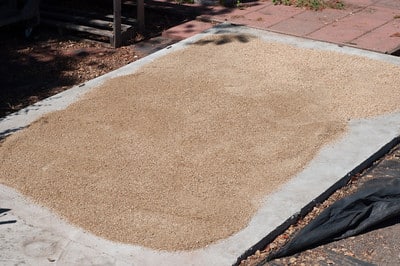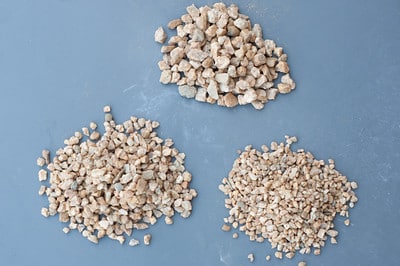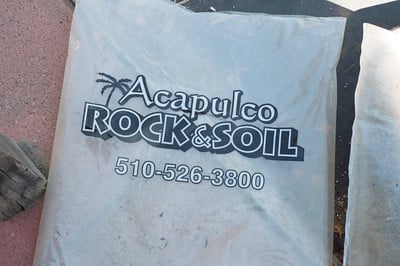Finding the right soil mixes for my trees has proved surprisingly tricky – and not for lack of trying. I’ve experimented broadly over the years, and have benefitted from the advice of both American and Japanese bonsai professionals. Still, I find room for improvement.
In the past few years, I’ve moved to mixes that retain more moisture than previous mixes. The effect is subtle the first year after the repotting, but as soil particles break down, the moisture retention increases. I’m learning a lot now about soil I selected two, and sometimes 3 or 4, years ago, and I’m looking to experiment further.
The most basic variables – the properties of the particles themselves – are simple.
- Decomposed granite retains less moisture than other ingredients and weighs a lot
- Lava retains some moisture and is not light
- Pumice retains some moisture and is lightweight
- Akadama retains lots of moisture and breaks down over time
It’s also clear that smaller particles retain more moisture than larger particles. So far so good.
Then time comes into play. Some soil particles, like akadama, break down over time. This is actually a very well engineered feature. Newly repotted trees typically require great drainage to develop new roots – exactly what we get when soil mix is fresh. As time passes, akadama breaks down and retains more moisture. Whether this is good or bad depends on our goals for each tree.
This brings us to the next variables – variety and stage of training. In general, soils that drain well require more frequent watering and are great for generating vigorous growth. Soils that drain slowly require less frequent watering and are great for reducing vigor. How each variety responds to different soils also comes into play, but that’s a topic unto itself.
Once the “perfect” soil has been selected and the tree carefully repotted to the most exacting of standards, we face two additional variables – watering habits and weather. There’s nothing – outside of moving – to do about the weather, so I’ll leave it at that. How we water ultimately determines the success of the soil we’ve selected.
For years I’ve used a simple mix that drains well. In short, it keeps my trees healthy as long as I water enough. So much so that some of my more mature trees are a bit more vigorous than I’d like them to be. That’s why I started using soils that retain more moisture. I’ve since learned that using different soil mixes is great for the trees, but it’s increasingly hard to make sure I’m giving each tree the appropriate amount of water. The young trees in coarse soils need lots of water, and the older trees dry out more slowly. A solvable problem when one’s around to water all of the time, but a bit of a puzzle otherwise.
I’m doing what I can with the hose this year, and I’m changing the soil mixes I plan to use next year. For starters, I’ll be using more decomposed granite.

Decomposed granite drying in the sun

Large, medium, and small particles of DG
Long a component of “Boon Mix,” decomposed granite, or DG, as folks say, retains less water than the other ingredients I use. Using more of it will help with several pines that are still early in their development.
A few of my deciduous trees have the opposite problem – they are drying out too quickly. For these trees, I’ll use smaller particles that retain more moisture. The example that comes to mind is a group of young Japanese maples that I picked up at a bonsai sale this spring. They are planted in coarse soil that would be great if I were around to water more often.
Where do I get the basic soil ingredients I use? From any number of places. I buy akadama from Deer Meadow Bonsai and other local vendors. I find the non-bonsai specific ingredients at local rock yards including American Soil & Stone and its neighbor Acapulco Rock & Soil. Both are worth a visit if you’re in the area.

American Soil & Stone

Acapulco Rock & Soil
Subscribe to Indian Bonsai Art
New Posts Delivered Every Tuesday and Friday
